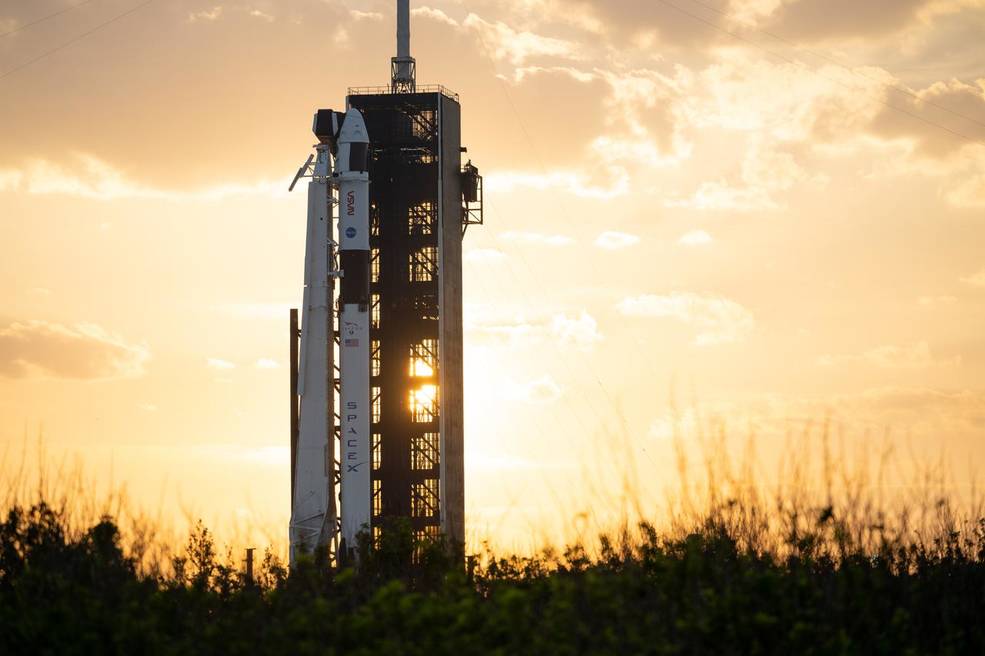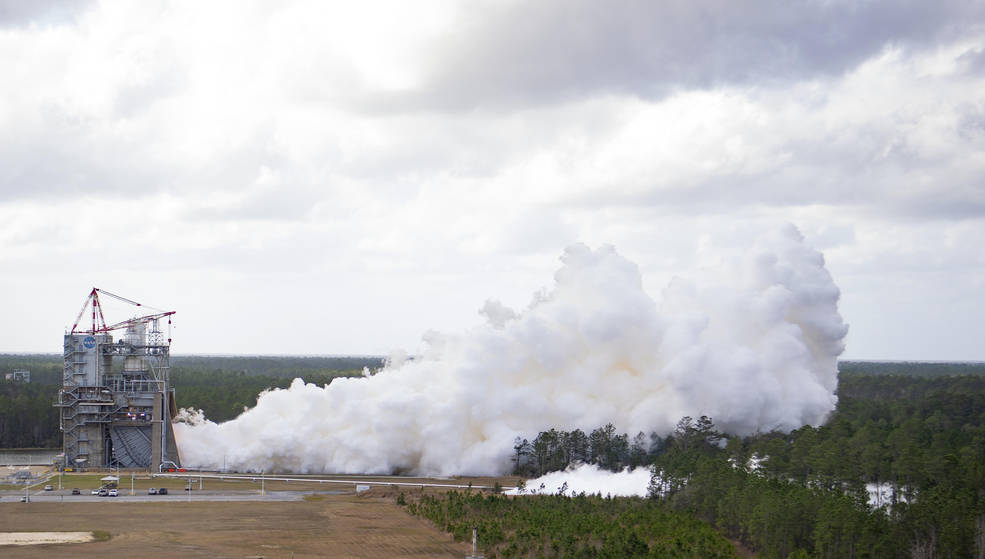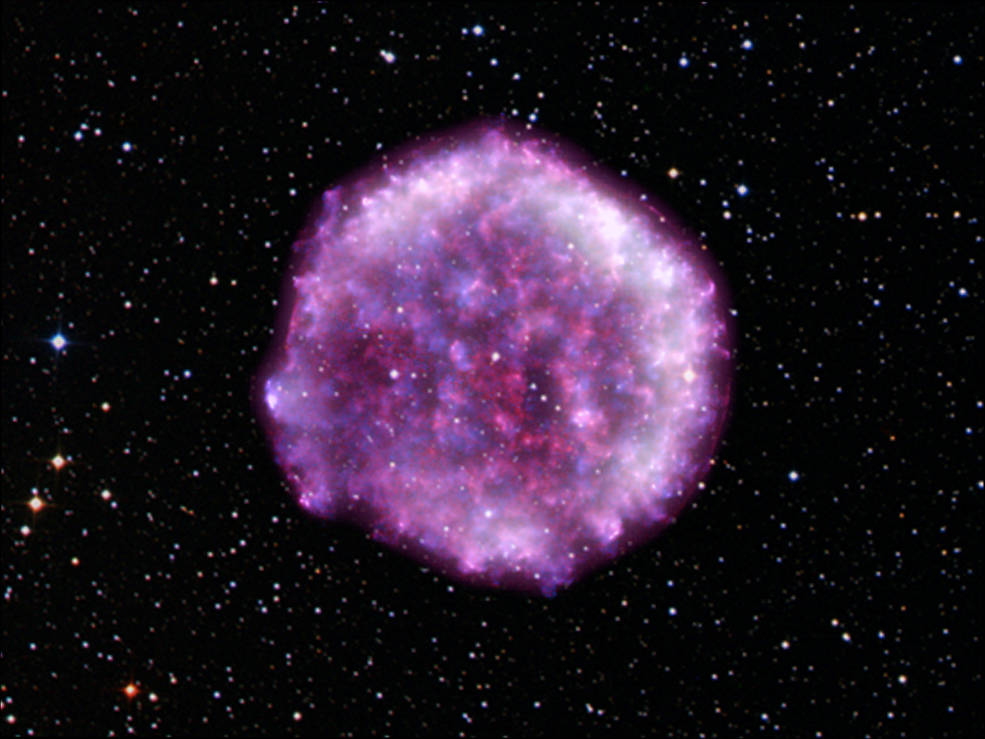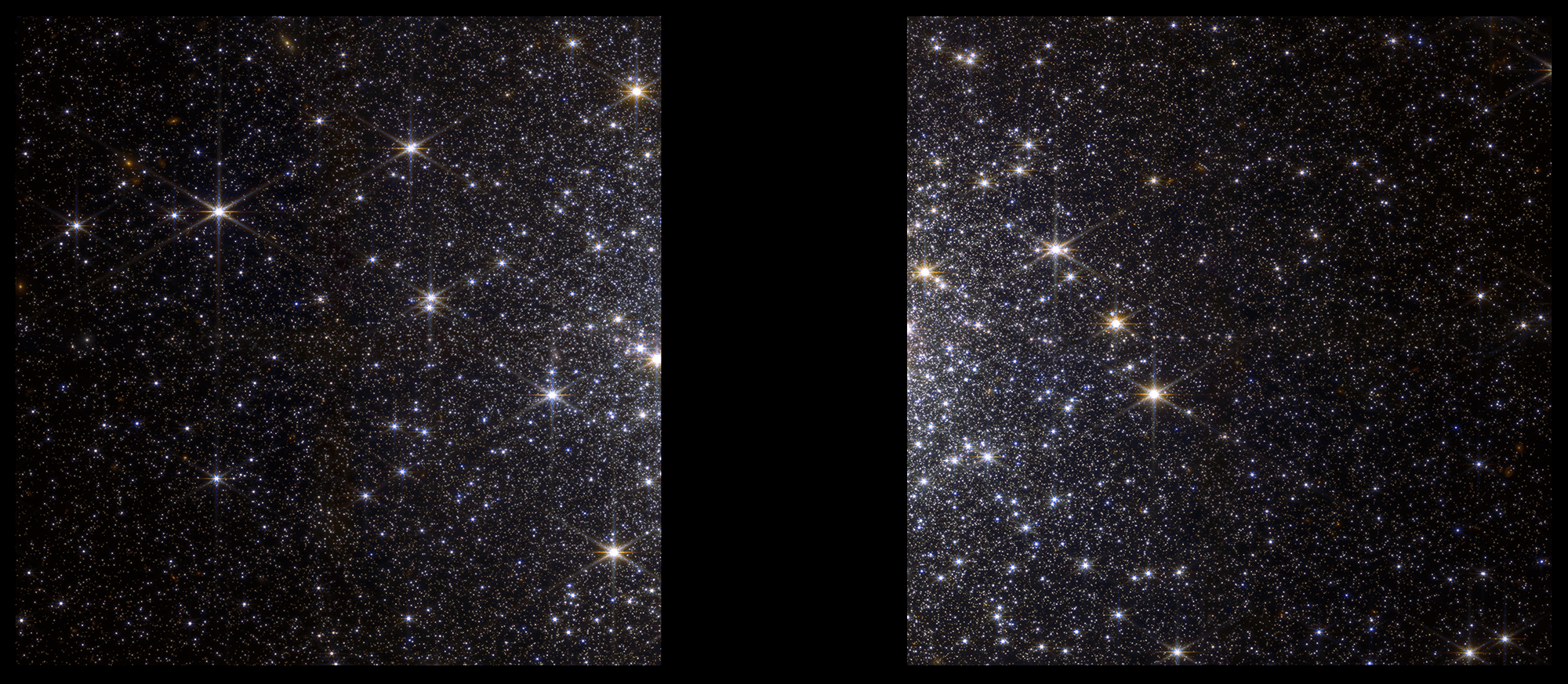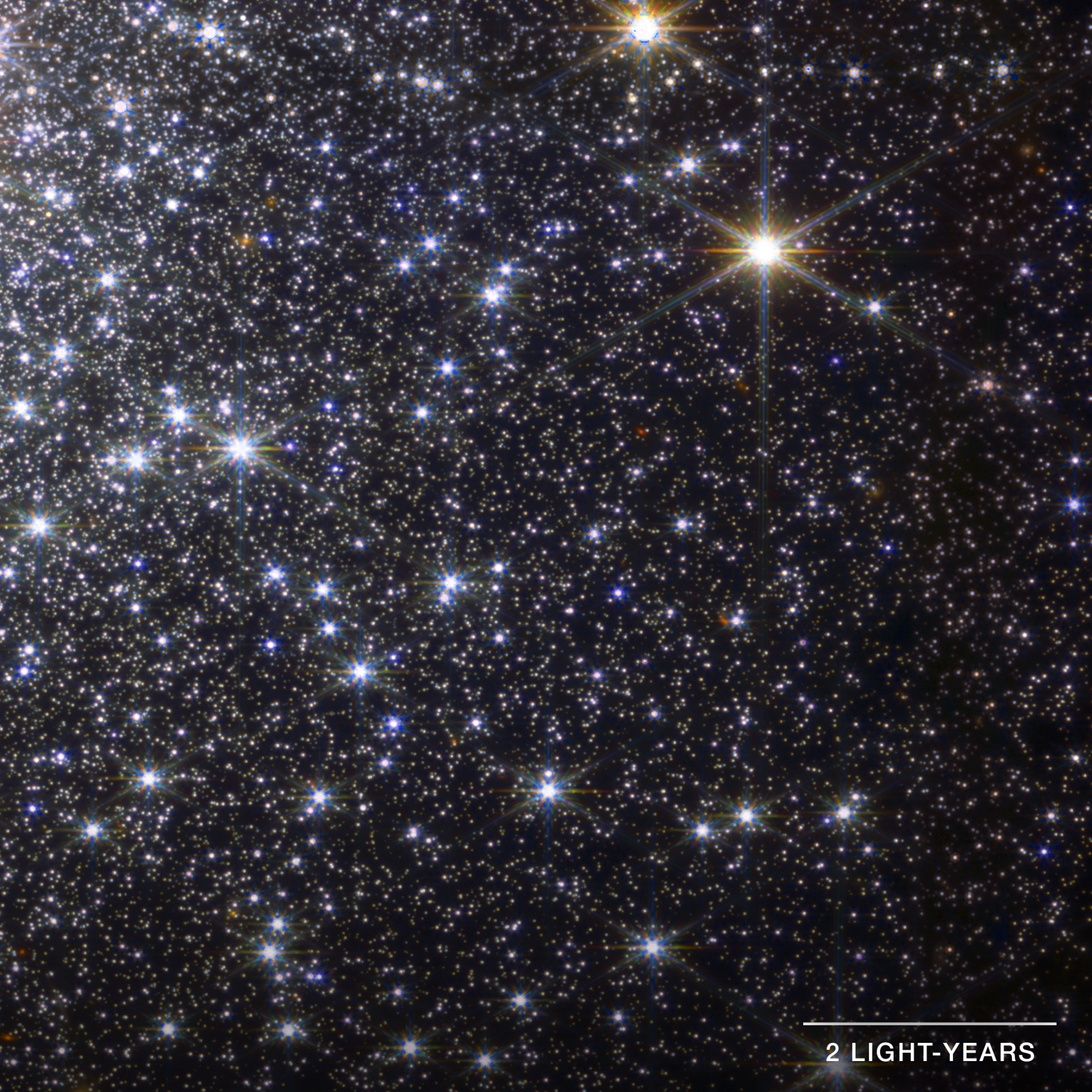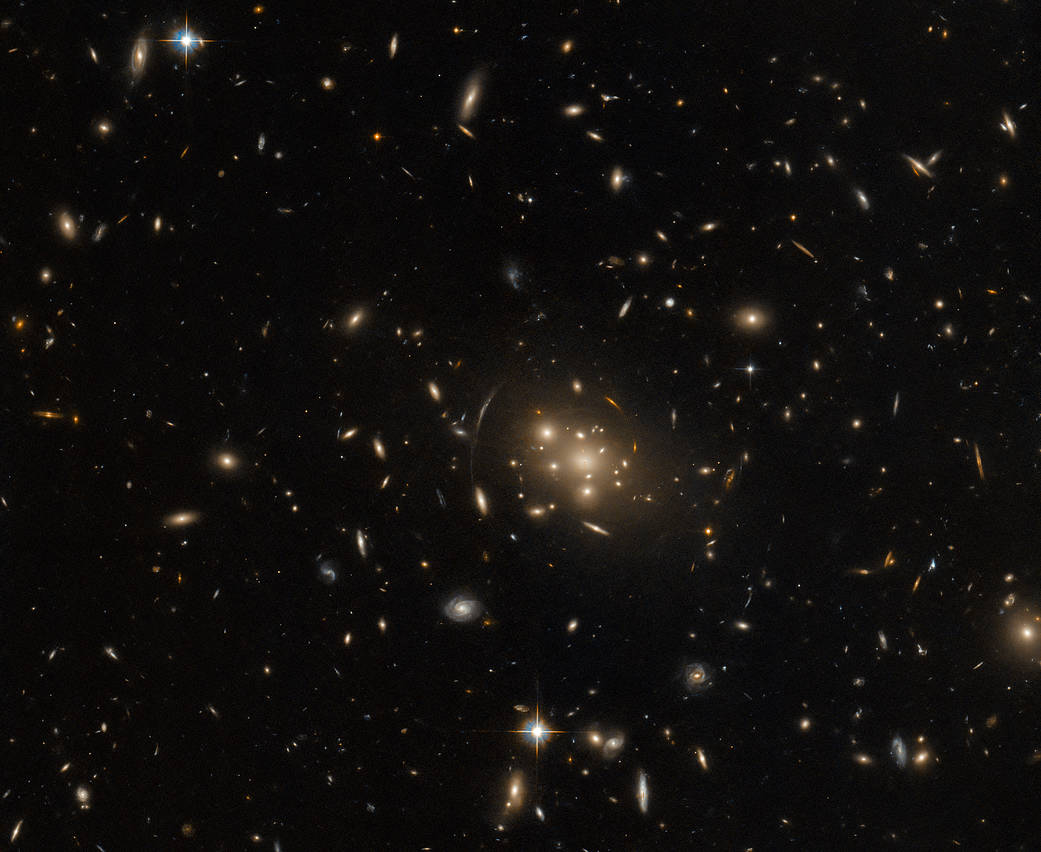The Marshall Star for March 1, 2023.
In This Week’s Star
- NASA, SpaceX Move Forward with March 1 Launch to Space Station
- NASA Continues Testing Redesigned Artemis Moon Rocket Engines
- Marshall Celebrates National Engineers Week
- IXPE Unlocks Mysteries of Historic Tycho Supernova
- Webb Observes a Globular Cluster Sparkling with Separate Stars
- Hubble Observes Cosmic Contortions
- Redstone Arsenal Gate 10 to Reopen March 6
- Arsenal Gate 9 Visitor Center New Hours Starting March 6
NASA, SpaceX Move Forward with March 1 Launch to Space Station
NASA’s SpaceX Crew-6 mission is ‘Go’ for launch to the International Space Station following completion of a launch readiness review, weather briefing, and mission management meeting Feb. 28. Launch is targeted at 11:34 p.m. CST March 1, on a SpaceX Falcon 9 rocket and Dragon spacecraft from Launch Complex 39A from NASA’s Kennedy Space Center.
Mission teams stood down from a Feb. 27 launch attempt to review an unusual data signature related to confirming a proper bleed in of pad supplied fluid known as triethylaluminum triethylboron (TEA-TEB). TEA-TEB is an ignition fluid used to start the Falcon 9’s nine first stage kerosene/liquid oxygen Merlin engines. The bleed-in process ensures there is an adequate supply of this fluid at each engine to mix with liquid oxygen to start the engines. During prelaunch, the TEA-TEB fluid – which originates in a ground supply tank – flows to the rocket’s interface and back to a catch tank to remove gas from the ground plumbing. During engine start, the fluid then flows to the engines for ignition. Flow into the catch tank is one of several parameters used to determine that the fluid has been properly bled into the system.
After a thorough review of the data and ground system, NASA and SpaceX determined there was a reduced flow back to the ground TEA-TEB catch tank due to a clogged ground filter. This clogged filter fully explained the signature observed on the launch attempt. SpaceX teams replaced the filter, purged the TEA-TEB line with nitrogen, and verified the lines are clean and ready for launch.
Weather officials with Cape Canaveral Space Force Station’s 45th Weather Squadron continue to predict a 95% chance of favorable weather conditions for Crew-6 launch, with the flight through precipitation rule serving as the primary weather concern. Conditions along the Dragon ascent corridor are within acceptable limits but will remain a watch item for the attempt.
NASA astronauts Stephen Bowen, mission commander, and Warren Hoburg, pilot, along with United Arab Emirates astronaut Sultan Alneyadi and Roscosmos cosmonaut Andrey Fedyaev, who join as mission specialists, will travel to the space station for a science expedition mission. The international crew will fly aboard the Dragon spacecraft named Endeavour, which previously flew NASA’s SpaceX Demo-2, NASA’s SpaceX Crew-2, and Axiom Mission 1 astronauts.
After an approximate 24 1/2-hour transit, the crew will dock to the space-facing port of the microgravity laboratory’s Harmony module about 12:17 a.m. March 3. Hatch opening is targeted for approximately 2:27 a.m., followed by the welcome ceremony about 2:40 a.m. Arrival coverage on NASA TV and the agency’s website begins March 2 at 10:30 p.m.
NASA Continues Testing Redesigned Artemis Moon Rocket Engines
Engineers hot fire test a redesigned RS-25 engine Feb. 22 for future flights of the Space Launch System (SLS) rocket on Artemis missions to the Moon. The test, conducted on the Fred Haise Test Stand at NASA’s Stennis Space Center, is part of a certification series to support production of new RS-25 engines by lead SLS engines contractor Aerojet Rocketdyne. As NASA explores the secrets of the universe for the benefit of all, the new engines will help power future Artemis missions, beginning with Artemis V. Operators fired the RS-25 engine up to 111% power level – the same level needed to help the SLS lift the Orion spacecraft and other future payloads to orbit – for 10 minutes (600 seconds), more than the 500 seconds the engines must operate to reach space. Longer-duration hot fires allow operators to test the limits of engine performance and provide a margin of safety for flight operations. The hot fire is the latest in an ongoing series of tests to certify new manufacturing techniques and processes for production of RS-25 engines. Four engines fire simultaneously, providing up to 2 million pounds of combined thrust, to help power the launch of the SLS to orbit. (NASA)
Marshall Celebrates National Engineers Week
Malik Thompson shares his experience as an aerospace materials engineer at NASA’s Marshall Space Flight Center in celebration of National Engineers Week and Black History Month. “Always persevere. No matter how hard things get, no matter how difficult things may seem,” Thompson said. “You yourself have something very significant to contribute that only you can contribute … always speak up and do your best.” National Engineers Week, which was celebrated Feb. 19-25, is dedicated to ensuring a diverse future engineering workforce by increasing the awareness of engineering and other careers in science, technology, engineering, and math fields. Black History Month, held each February, pays tribute to the generations of African Americans who overcame adversity to achieve full citizenship in American society. NASA celebrates Black History Month annually, highlighting the importance of the culture, traditions, and contributions of its African American workforce. (NASA)
Ashlee Bracewell shares her experiences as a structural test engineer at Marshall in celebration of National Engineers Week and Introduce a Girl to Engineering Day on Feb. 23. “I get to go home every day knowing that I’ve completed my goal of getting to contribute to spaceflight,” Bracewell said. “Be curious, ask questions, and one day you’ll find yourself someplace you love.” Introduce a Girl to Engineering Day is a time to encourage young women to pursue engineering careers and opportunities. NASA understands the need to empower women and other underserved groups in science, technology, engineering, and math fields and aims to continue to inspire generations of women to come. (NASA)
IXPE Unlocks Mysteries of Historic Tycho Supernova
An international team of scientists has uncovered new information about the remains of a star that exploded more than 450 years ago. The results provided new clues about how the conditions in the shock waves created by titanic stellar explosions, called supernovae, accelerate particles to near the speed of light.
The supernova remnant is called Tycho, named for Danish astronomer Tycho Brahe, who noticed the bright glow of this new “star” in the constellation Cassiopeia in 1572. In the new study, astronomers used NASA’s Imaging X-ray Polarimetry Explorer (IXPE) to study polarized X-rays from the Tycho supernova remnant.
IXPE revealed, for the first time, the geometry of the magnetic fields close to the shock wave, which is still propagating from the initial explosion and forms a boundary around the ejected material. Understanding the magnetic field geometry allows scientists to further investigate how particles are accelerated there.
“As one of the so-called historical supernovae, Tycho was observed by humanity in the past and had a lasting social and even artistic impact,” said Dr. Riccardo Ferrazzoli, a researcher at the Italian National Institute for Astrophysics in Rome, which partners with NASA on the IXPE mission. “It’s exciting to be here, 450 years after its first appearance in the sky, to see this object again with new eyes and to learn from it.” Ferrazzoli is the lead author of the newly published Tycho findings, which appear in the latest issue of The Astrophysical Journal.
Measuring X-ray polarization tells scientists the average direction and ordering of the magnetic field of light waves that make up X-rays from a high-energy source like Tycho. The polarized X-rays are produced by electrons moving in the magnetic field in a process called “synchrotron emission.” The polarization direction from the X-rays can be mapped back to the direction of the magnetic fields at the location where the X-rays were generated. This information helps scientists address some of the biggest questions in astrophysics, such as how Tycho and other objects accelerate particles closer to the speed of light than the most powerful particle accelerators on Earth.
“The process by which a supernova remnant becomes a giant particle accelerator involves a delicate dance between order and chaos,” said Patrick Slane, senior astrophysicist at the Center for Astrophysics at Harvard in Cambridge, Massachusetts. “Strong and turbulent magnetic fields are required, but IXPE is showing us that there is a large-scale uniformity, or coherence, involved as well, extending right down to the sites where the acceleration is taking place.”
During its decades of operation, NASA’s Chandra X-ray Observatory has repeatedly observed the Tycho supernova remnant, helping researchers make landmark discoveries about this fascinating formation. With its ability to identify and track polarized X-ray light, IXPE builds on the groundwork laid by Chandra. Information from IXPE allows scientists to better understand the process by which cosmic rays, highly energetic particles that permeate our galaxy are accelerated by supernova remnants.
IXPE helped map the shape of Tycho’s magnetic field with unprecedented clarity and scale. Although previous observatories have looked at Tycho’s magnetic field in radio waves, IXPE measured the shape of the field on scales smaller than one parsec, or roughly 3.26 light-years – a vast size in terms of human experience, but the closest researchers have ever come to observing the source of the highly energetic “cosmic rays” emitted by one of these distant phenomena. This information is valuable as scientists explore how particles are accelerated in the wake of the initial explosion’s blast wave.
Researchers also documented similarities and surprising differences between IXPE’s findings at Tycho and at the Cassiopeia A supernova remnant, an earlier subject of study. The overall directions of the magnetic fields in both supernova remnants appears to be radial, stretched out along a direction extending outward. But Tycho yielded a much higher degree of X-ray polarization than Cassiopeia A, suggesting it may possess a more ordered, less turbulent magnetic field.
The Tycho supernova is classified as a Type Ia, which occurs when a white dwarf star in a binary system shreds its companion star, capturing some of its mass and triggering a violent explosion. The obliteration of the white dwarf sends debris hurtling into space at tremendous speeds. Such events are commonly believed to be the source of most of the galactic cosmic rays found in space, including those that continually bombard Earth’s atmosphere.
The Tycho supernova blast itself released as much energy as the Sun would put out over the course of 10 billion years. That brilliance rendered the Tycho supernova visible to the naked eye here on Earth in 1572, when it was spotted by Brahe and other stargazers, potentially including an 8-year-old William Shakespeare, who would go on to describe it in an early passage of “Hamlet” at the turn of the 17th century.
IXPE is a collaboration between NASA and the Italian Space Agency with partners and science collaborators in 12 countries. IXPE is led by NASA’s Marshall Space Flight Center. Ball Aerospace, headquartered in Broomfield, Colorado, manages spacecraft operations together with the University of Colorado’s Laboratory for Atmospheric and Space Physics in Boulder.
Webb Observes a Globular Cluster Sparkling with Separate Stars
Image of the globular cluster M92 captured by the James Webb Space Telescope’s NIRCam instrument. This image is a composite of four exposures using four different filters: F090W (0.9 microns) is shown in blue; F150W (1.5 microns) in cyan; F277W (2.77 microns) in yellow; and F444W (4.44 microns) in red. The black strip in the center is a chip gap, the result of the separation between NIRCam’s two long-wavelength detectors. The gap covers the dense center of the cluster, which is too bright to capture at the same time as the fainter, less dense outskirts of the cluster. The image is about 39 light-years across. Visit here for a Q&A with Webb team members on the telescope’s observations of M92 and how the team is using the data to help other astronomers. (NASA, ESA, CSA, A. Pagan/STScI)
Detail of the globular cluster M92 captured by Webb’s NIRCam instrument. This field of view covers the lower left quarter of the right half of the full image. Globular clusters are dense masses of tightly packed stars that all formed around the same time. In M92, there are about 300,000 stars packed into a ball about 100 light-years across. The night sky of a planet in the middle of M92 would shine with thousands of stars that appear thousands of times brighter than those in our own sky. The image shows stars at different distances from the center, which helps astronomers understand the motion of stars in the cluster, and the physics of that motion. (NASA, ESA, CSA, A. Pagan/STScI)
Hubble Observes Cosmic Contortions
A massive galaxy cluster in the constellation Cetus dominates the center of this image from the NASA/European Space Agency Hubble Space Telescope. This image is populated with a serene collection of elliptical and spiral galaxies, but galaxies surrounding the central cluster – which is named SPT-CL J0019-2026 – appear stretched into bright arcs, as if distorted by a gargantuan magnifying glass. This cosmic contortion, called a gravitational lens, occurs when the powerful gravitational field of a massive object like a galaxy cluster distorts and magnifies the light from background objects. These objects would normally be too distant and faint to observe, but the magnifying power of the gravitational lens extends Hubble’s view even deeper into the universe. This observation is part of an ongoing project to fill short gaps in Hubble’s observing schedule by systematically exploring the most massive galaxy clusters in the distant universe, in the hopes of identifying promising targets for further study with both Hubble and the NASA/European Space Agency/Canadian Space Agency James Webb Space Telescope. This particular galaxy cluster lies at a vast distance of 4.6 billion light-years from Earth. (ESA/Hubble & NASA, H. Ebeling)
Redstone Arsenal Gate 10 to Reopen March 6
Redstone Arsenal’s Gate 10 on Patton Road will reopen March 6 in response to increased traffic as more of the workforce returns to on-site work. Gate 10 will be open for inbound traffic from 5:30 a.m. to 1 p.m. and to outbound traffic from 5:30 a.m. to 5 p.m. “We’re experiencing increased traffic levels at our busiest gates and we’re making adjustments,” Garrison Commander Col. Brian Cozine told the Redstone Rocket. “We realize that slowdowns at our access points have a domino effect in the surrounding communities, and we’re working to ease some of that pressure.” (Redstone Rocket/ Erin Elise Enyinda)
Arsenal Gate 9 Visitor Center New Hours Starting March 6
Beginning March 6, the Redstone Arsenal Visitor Control Center at Gate 9 will have new operating hours. The visitor center will now be open from 7 a.m. to 3 p.m. Monday through Friday. The center is closed on weekends and federal holidays. Individuals should plan accordingly to visit during operating hours to get a visitor badge or register with the Army’s Automated Installation Entry system. (Redstone Arsenal)


























